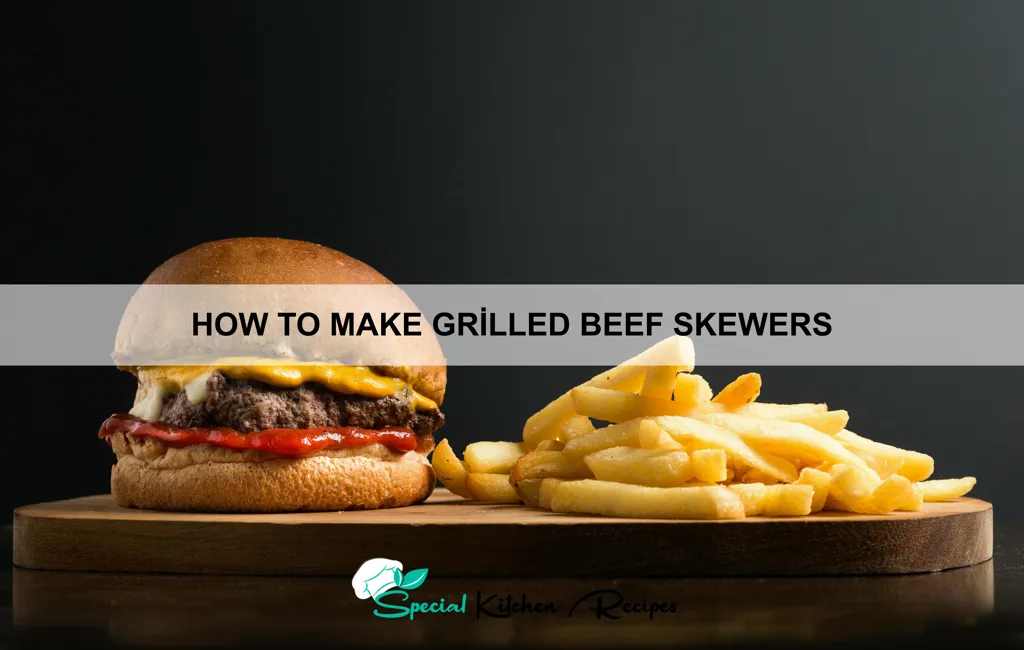Grilled beef skewers, a culinary delight enjoyed across the globe, boast a rich and diverse history, far exceeding the simple act of grilling marinated meat on a stick. Their origins are difficult to pinpoint precisely, with evidence suggesting independent development in various cultures. Ancient civilizations, from the nomadic tribes of Central Asia to the early Greeks and Romans, utilized skewers as a practical method of cooking meat over open fires. These early iterations likely involved simpler marinades and readily available cuts of meat, focusing on functionality rather than elaborate flavor profiles. The concept of skewering food facilitated even cooking and easy portability, making it ideal for feasts and travel alike.
The evolution of grilled beef skewers is intertwined with the development of various regional cuisines. In many parts of the Middle East and Asia, kebabs, a close relative of the beef skewer, hold significant cultural importance. Kebab variations, often featuring lamb or chicken alongside beef, are integral to celebrations and daily life, representing a cornerstone of their culinary heritage. For instance, in Turkey, where kebab varieties are countless, the annual consumption is estimated in the billions of servings. Similarly, in South America, churrasco, a style of barbecue featuring grilled meats on skewers, is a deeply ingrained social tradition, often involving large gatherings and communal eating. This highlights the social and cultural significance of these dishes, often transcending mere sustenance to become symbols of community and celebration.
The global popularity of grilled beef skewers continues to grow. According to recent market research, the global demand for processed meat, which includes many of the cuts used in skewers, shows a steady increase year on year, indicating a strong and persistent appetite for this style of cooking. This trend is fueled by factors such as increased accessibility to global cuisines, the convenience of grilling, and the versatility of the dish, allowing for endless variations in marinade, meat cut, and accompanying vegetables. From simple backyard barbecues to high-end restaurants, grilled beef skewers offer a universally appealing taste and a satisfying culinary experience that connects us to a rich and ancient culinary tradition.
Ingredients and Measurements
The success of your grilled beef skewers hinges on the quality of your ingredients and the precision of your measurements. Using high-quality beef will significantly enhance the final flavor, so don’t skimp here! We’ll be making enough for approximately 4 servings.
Beef: We recommend using 1.5 lbs (approximately 680g) of sirloin steak, or a similar cut known for its tenderness and flavor. Avoid tough cuts like chuck or round, as these will become chewy when grilled. Cut the steak into 1-inch (2.5cm) cubes. Ensure the cubes are relatively uniform in size for even cooking. Inconsistently sized pieces will cook unevenly, leading to some pieces being undercooked and others overcooked.
Marinade: A flavorful marinade is crucial for tenderizing the beef and adding depth of flavor. For this recipe, we’ll use:
- 1/4 cup (60ml) soy sauce (low sodium preferred)
- 2 tablespoons (30ml) olive oil
- 2 tablespoons (30ml) Worcestershire sauce
- 1 tablespoon (15ml) lemon juice (freshly squeezed is best)
- 1 tablespoon (15ml) brown sugar
- 1 teaspoon (5ml) garlic powder
- 1 teaspoon (5ml) onion powder
- 1/2 teaspoon (2.5ml) black pepper
- 1/4 teaspoon (1.25ml) red pepper flakes (optional, for a touch of heat)
Vegetables (optional): Adding vegetables to your skewers not only adds visual appeal but also contributes to a more balanced and flavorful meal. We suggest using approximately 1 cup (150g) of your favorite grilling vegetables, cut into similarly sized pieces as the beef. Popular choices include: bell peppers (any color), onions (red or white), zucchini, cherry tomatoes, and mushrooms. Remember to choose vegetables that hold their shape well during grilling.
Skewers: Use metal skewers, as wooden skewers require pre-soaking to prevent burning. Ensure your skewers are long enough to comfortably fit the beef and vegetables, leaving space at both ends for easy handling. If using wooden skewers, soak them in water for at least 30 minutes before use.
Note: These measurements are approximate. You can adjust the quantities to suit your preferences and the number of servings you’re preparing. Feel free to experiment with different marinades and vegetables to find your perfect combination!
Marinade Preparation
The success of your grilled beef skewers hinges significantly on the marinade. A well-crafted marinade will not only tenderize the beef but also infuse it with incredible flavor, resulting in juicy and flavorful skewers. For this recipe, we’ll be making a vibrant and flavorful marinade using readily available ingredients.
Ingredients:
- 1/2 cup soy sauce (low sodium preferred)
- 1/4 cup olive oil
- 2 tablespoons Worcestershire sauce
- 2 tablespoons red wine vinegar
- 2 cloves garlic, minced
- 1 tablespoon brown sugar
- 1 teaspoon ground cumin
- 1 teaspoon smoked paprika
- 1/2 teaspoon black pepper
- 1/4 teaspoon cayenne pepper (optional, for a touch of heat)
Instructions:
In a medium-sized bowl, whisk together the soy sauce, olive oil, Worcestershire sauce, and red wine vinegar until well combined. Ensure all ingredients are thoroughly mixed to create a uniform marinade. This step is crucial for even flavor distribution.
Next, add the minced garlic, brown sugar, cumin, smoked paprika, black pepper, and cayenne pepper (if using). Stir until the sugar is dissolved and the spices are evenly dispersed throughout the marinade. You can gently mash the garlic with the back of a spoon to release its flavor further.
Important Note: The intensity of the marinade’s flavor will develop over time. For the best results, marinate the beef for at least 2 hours, and ideally, overnight in the refrigerator. This allows the flavors to penetrate the meat thoroughly, resulting in incredibly tender and flavorful skewers. If marinating for longer than 4 hours, consider reducing the amount of acidic ingredients (vinegar) to prevent the beef from becoming overly tender or mushy.
Professional Tip: To ensure even marinating, use a resealable plastic bag or a shallow dish. If using a bag, seal it tightly and gently massage the bag to coat the beef completely. If using a dish, ensure the beef is fully submerged in the marinade. Flip the beef halfway through the marinating process for optimal flavor penetration.
Once the marinating time is complete, remove the beef from the marinade and discard the used marinade. Never reuse marinade that has been in contact with raw meat. Proceed to assembling your skewers and grilling them to perfection!
Beef Preparation and Cubing
Choosing the right cut of beef is crucial for delicious grilled beef skewers. For optimal results, select a lean cut that’s tender enough to grill quickly without becoming tough. Sirloin, flank steak, or tenderloin are excellent choices. Avoid cuts that are too fatty, as excessive fat will flare up on the grill and potentially burn your skewers.
Once you’ve selected your beef, the next step is preparation. Begin by trimming away any excess fat. Use a sharp knife to remove visible fat, leaving a thin layer to keep the meat moist during grilling. A good rule of thumb is to aim for about 1/4 inch of fat remaining. Excessive fat will lead to uneven cooking and a greasy final product.
Next, you’ll need to cut the beef into cubes. Consistency in size is key for even cooking. Aim for cubes that are approximately 1 to 1 1/2 inches in size. Using a meat thermometer to ensure a consistent internal temperature throughout the skewers is important. Larger cubes will take longer to cook, potentially leading to some pieces being undercooked while others are overcooked. Smaller cubes cook quickly, but can dry out easily.
For a recipe yielding approximately 12 skewers, you’ll need about 1.5 to 2 pounds of beef. This quantity provides ample meat for a satisfying serving. Adjust the amount of beef based on the number of skewers and the desired portion size.
After cubing, it’s highly recommended to marinate the beef. Marinating not only enhances the flavor but also tenderizes the meat. A simple marinade of soy sauce, olive oil, garlic, and your favorite spices can work wonders. Allow the beef to marinate for at least 30 minutes, or preferably overnight in the refrigerator for maximum flavor penetration and tenderness. Remember to remove the beef from the refrigerator 30 minutes before grilling to allow it to come to room temperature for more even cooking.
Finally, before assembling your skewers, pat the beef cubes dry with paper towels. This removes excess moisture, promoting better browning and searing on the grill. Excess moisture will cause the beef to steam instead of sear, resulting in a less flavorful and less appealing final product.
Skewer Assembly
Now that your beef is perfectly marinated, it’s time to assemble the skewers. This seemingly simple step is crucial for achieving evenly cooked and visually appealing skewers. We’ll be aiming for skewers approximately 4-5 inches long, ideal for grilling and easy handling. You’ll need about 1 pound of cubed beef for 6-8 skewers, depending on the size of your beef cubes.
Choose the right skewers: Opt for metal skewers, as they conduct heat better than wooden ones, leading to more even cooking. Flat metal skewers are preferable to round ones as they allow for better contact with the meat and prevent the cubes from spinning. If using wooden skewers, soak them in water for at least 30 minutes before using to prevent burning.
Cubing the beef: Ensure your marinated beef is cut into uniform 1-inch cubes. Consistent sizing ensures even cooking. Larger pieces will take longer to cook through, while smaller pieces might dry out. Aim for a pleasing balance.
The assembly process: Start by threading a beef cube onto one end of the skewer. Leave about half an inch of space at each end to allow for easy handling and to prevent the meat from falling off during grilling. Then, alternate beef cubes with your chosen vegetables. Popular options include bell peppers (cut into 1-inch pieces), onions (cut into 1-inch chunks), cherry tomatoes, and zucchini (cut into 1-inch pieces). Avoid overcrowding the skewers; leave a small space between each piece to allow for proper heat penetration and prevent sticking.
Vegetable selection and preparation: Choose vegetables that hold their shape well during grilling and complement the beef. Pre-cut vegetables to the same size as your beef cubes for consistent cooking times. Overly large vegetable pieces will be undercooked while the beef is done. Consider marinating the vegetables along with the beef for enhanced flavour.
Finishing the skewers: Once you’ve assembled your skewers, give them a final check to ensure that the meat and vegetables are evenly spaced and securely fastened. If using metal skewers, gently twist the meat and vegetables to ensure they’re well-seated. Avoid overfilling the skewers, as this can lead to uneven cooking and make turning them difficult.
Pro Tip: For extra stability, you can lightly thread a small piece of vegetable or meat between each cube to lock them into place. This technique is particularly helpful when using softer vegetables like mushrooms.
Grilling Techniques for Perfect Beef Skewers
Mastering the art of grilling beef skewers involves more than just tossing meat onto hot coals. Achieving perfectly cooked, flavorful skewers requires attention to detail and a few key techniques. Let’s explore how to grill your beef skewers to perfection.
Prepare your grill: Before you even think about your skewers, ensure your grill is properly preheated. For charcoal grills, aim for medium-high heat, with a good bed of hot coals evenly distributed. For gas grills, preheat to medium-high (around 375-400°F or 190-205°C). A clean grilling surface is crucial; scrape away any residue from previous grilling sessions to prevent sticking and impart unwanted flavors.
Oil the grates: Lightly oil your grill grates using a high-heat oil like canola or grapeseed oil. This prevents sticking and creates a beautiful sear on your skewers. Use a paper towel to apply a thin layer, avoiding excessive oil which can cause flare-ups.
Grilling the skewers: Once the grill is hot, carefully place your beef skewers on the grates. Avoid overcrowding; leave some space between skewers for even cooking and to prevent steaming. Cook for approximately 3-4 minutes per side for medium-rare, adjusting cooking time based on the thickness of your beef cubes and desired doneness. Use tongs to gently rotate the skewers every 2-3 minutes to ensure even browning and cooking. Remember that internal temperature is key. A meat thermometer inserted into the thickest part of the skewer should register 130-135°F (54-57°C) for medium-rare.
Managing flare-ups: Flare-ups are common when grilling, especially with fatty meats. If a flare-up occurs, quickly move the skewers to a cooler part of the grill or temporarily remove them. Never pour water directly onto the flames; this can cause a dangerous steam explosion. Instead, use a grill brush to gently move the flames or close the grill lid briefly to reduce oxygen.
Resting is essential: Once the skewers reach your desired internal temperature, remove them from the grill and let them rest for 5-10 minutes before serving. This allows the juices to redistribute throughout the meat, resulting in a more tender and flavorful final product. Resting is crucial for preventing dry, tough skewers.
Monitoring the doneness: Use a reliable meat thermometer to ensure your beef skewers are cooked to your preference. Don’t rely solely on visual cues, as the color of the meat can be misleading. Always check the internal temperature to guarantee food safety and optimal tenderness.
By following these grilling techniques, you’ll be well on your way to creating delicious, perfectly cooked beef skewers that will impress your friends and family. Remember to adjust cooking times based on your grill’s heat and the thickness of your beef cubes. Happy grilling!
Resting the Skewers
Resting your grilled beef skewers is just as crucial as the grilling process itself. It allows the juices, which have been pushed to the surface during cooking, to redistribute throughout the meat, resulting in incredibly tender and flavorful skewers. Failing to rest will leave you with dry, tough meat, negating much of your hard work.
For optimal results, allow your skewers to rest for at least 5-10 minutes after removing them from the grill. This resting period is especially important for larger, thicker cuts of beef. Smaller, thinner skewers might only need 5 minutes, while thicker ones could benefit from the full 10 minutes, or even slightly longer. The internal temperature will continue to rise slightly during this time, reaching its final, safe temperature.
The best way to rest your skewers is to transfer them from the grill to a clean, large platter or cutting board. Avoid overcrowding them; give them some space to breathe. You can loosely tent them with aluminum foil to help retain heat and moisture, but don’t seal them tightly, as this can trap steam and make the skewers soggy. Alternatively, you could use a wire rack placed over a baking sheet to allow for even airflow.
Resist the urge to cut into the skewers immediately. Slicing them prematurely will cause the precious juices to escape, leaving you with dry, disappointing skewers. Patience is key here! The longer you let them rest, the more tender and juicy they will be. Consider using a meat thermometer to check the internal temperature before and after resting. The temperature should remain stable or continue to rise slightly during the rest period.
Once the resting period is complete, carefully remove the skewers from the platter or rack. Using sharp knife, cut each skewer into individual pieces, ensuring you cut through the meat cleanly. Serve immediately and enjoy the results of your perfectly rested, juicy, and flavourful grilled beef skewers. Remember, proper resting is a crucial step to achieving restaurant-quality results at home. Don’t skip it!
Pro Tip: If you’re serving your skewers with a sauce, consider adding it after resting. This prevents the sauce from making the skewers soggy before serving.
Recommendations
For the most flavorful grilled beef skewers, marinate the beef for at least 30 minutes, or preferably overnight. This allows the flavors to penetrate the meat thoroughly, resulting in a more tender and delicious final product. Experiment with different marinades to find your favorite – teriyaki, chimichurri, or a simple balsamic vinaigrette all work wonderfully.
Ensure your skewers are properly prepared before grilling. Soak wooden skewers in water for at least 30 minutes to prevent burning. If using metal skewers, ensure they are heat-resistant. Don’t overcrowd the grill; this will lower the temperature and lead to uneven cooking. Maintain a consistent medium-high heat for optimal grilling.
Serving suggestions are endless! These skewers are fantastic on their own, but they also pair beautifully with a variety of sides. Consider serving them with a vibrant salad of mixed greens, cherry tomatoes, and cucumbers, drizzled with a light vinaigrette. A side of grilled vegetables like bell peppers and onions would also complement the skewers perfectly. For a heartier meal, serve with rice, couscous, or quinoa.
Storage is crucial for maintaining quality. Allow the skewers to cool completely before storing them in an airtight container in the refrigerator. They will keep for up to 3 days. For longer storage, consider freezing the cooked skewers. They can be frozen for up to 3 months. When reheating, ensure the internal temperature reaches 165°F (74°C) to ensure food safety.
Nutritional Information (per serving, approximate values will vary based on ingredients and portion size): Calories: 250-350; Protein: 25-35g; Fat: 15-25g; Carbohydrates: 5-10g. Note: This is an estimate and does not account for added marinade ingredients or serving sizes. For precise nutritional information, use a nutrition calculator based on your specific recipe and ingredients.
To enhance the dining experience, consider adding a dipping sauce. A simple yogurt-based tzatziki, a spicy sriracha mayo, or a flavorful peanut sauce would all complement the grilled beef beautifully. Remember to adjust the seasoning and marinade to your own preferences for a truly personalized dish.





